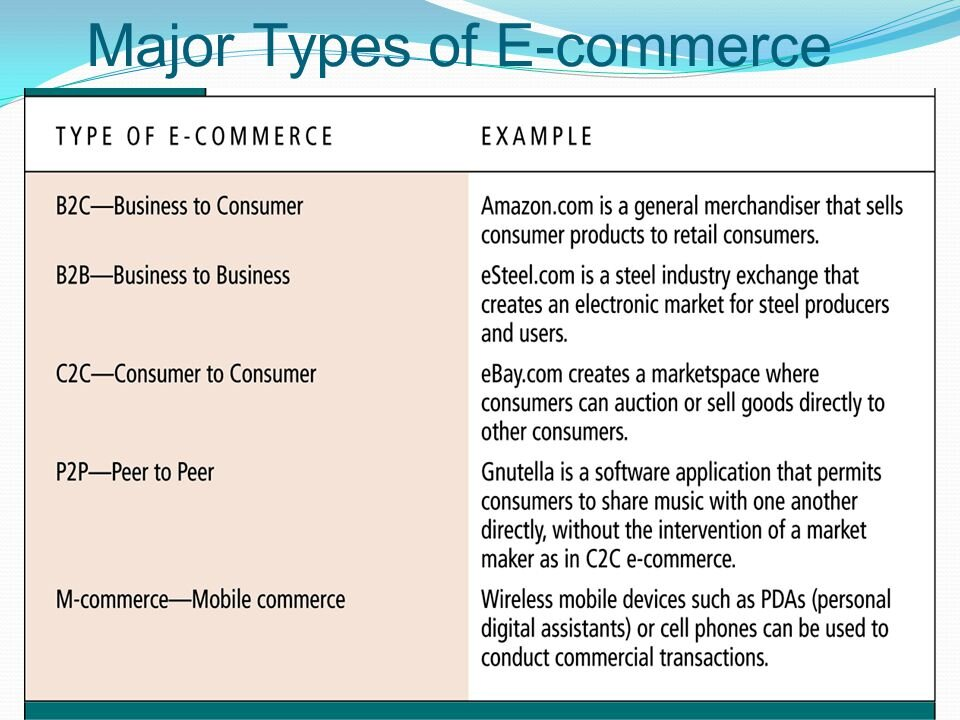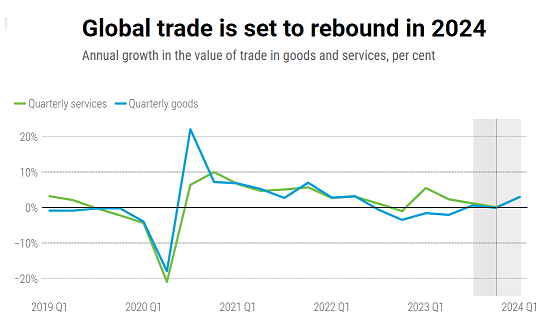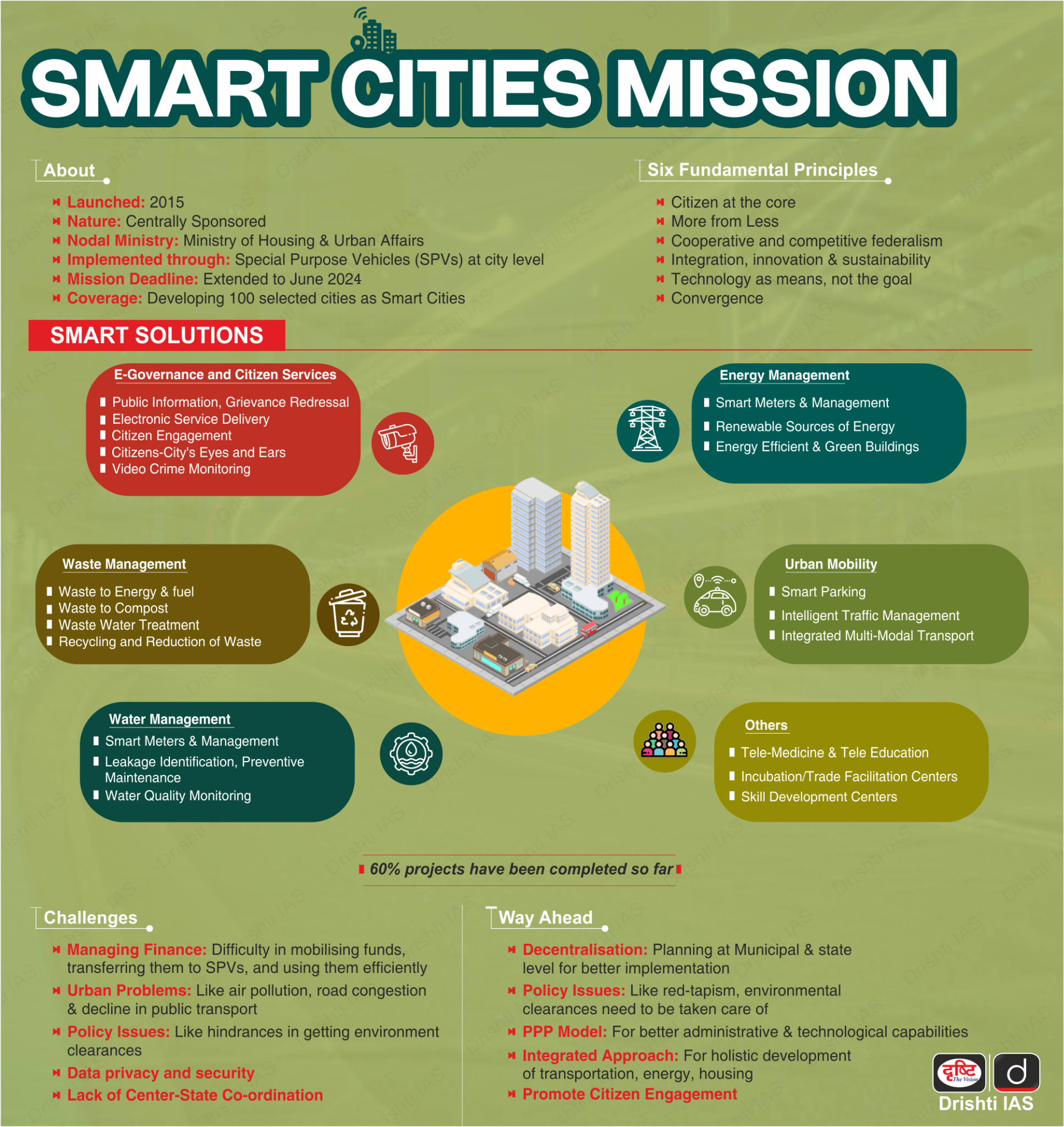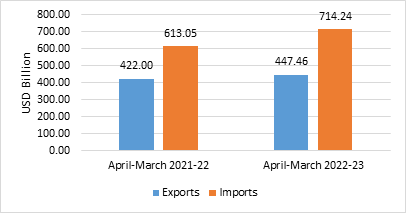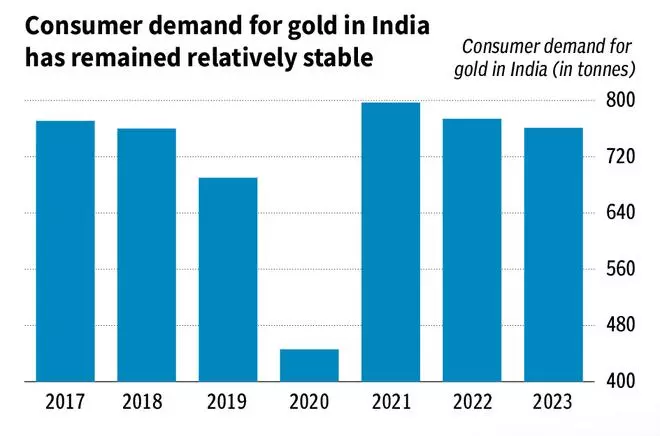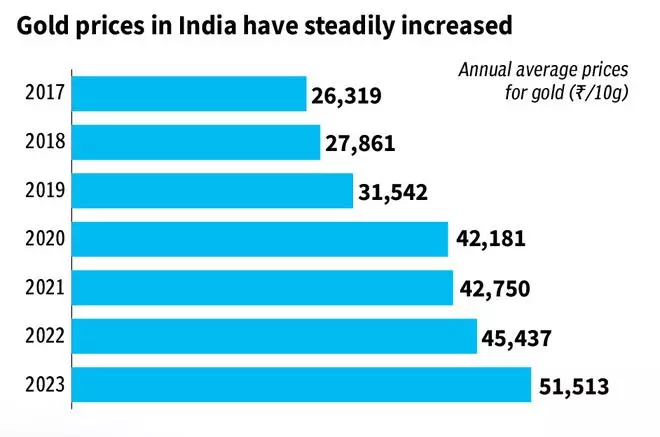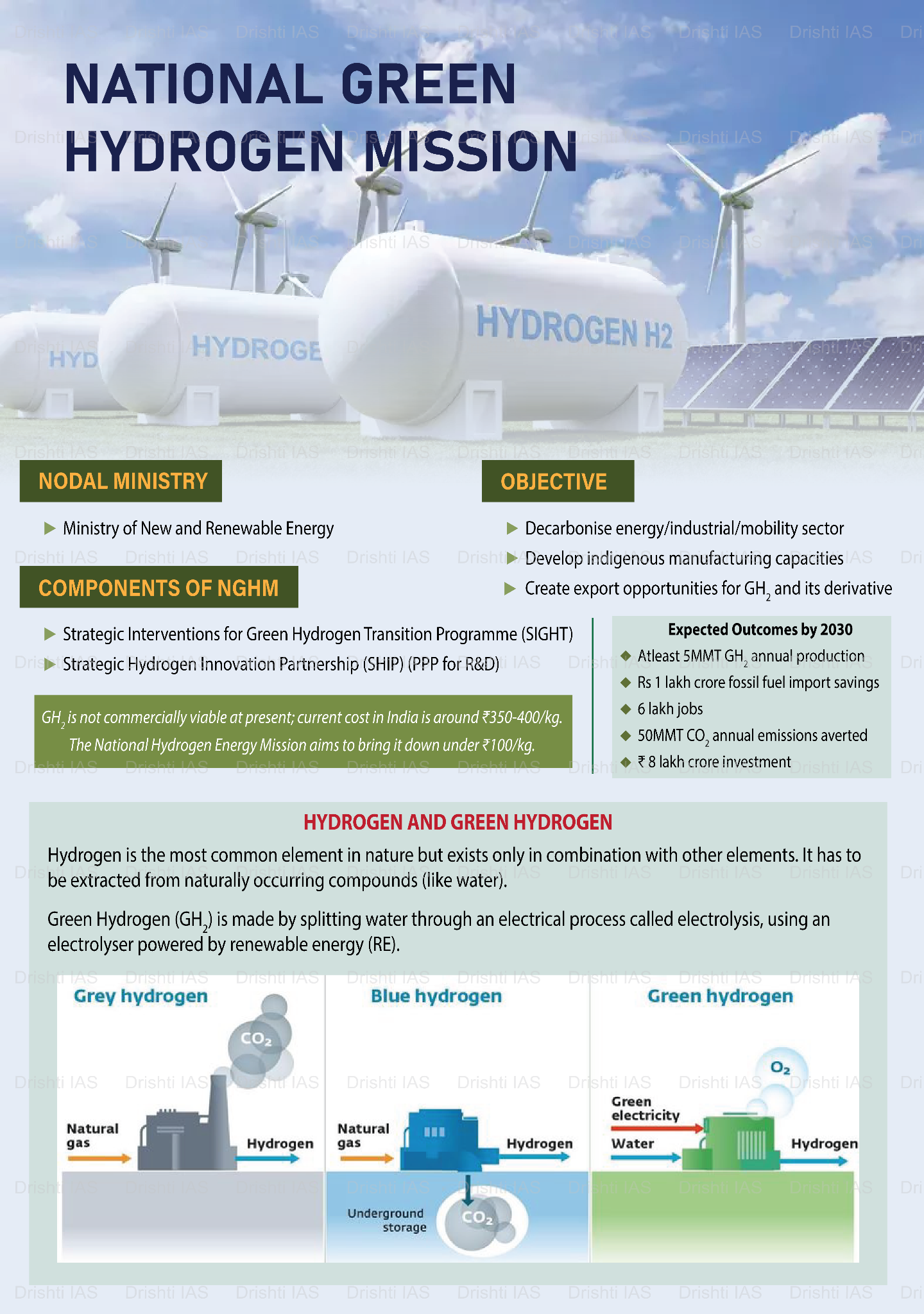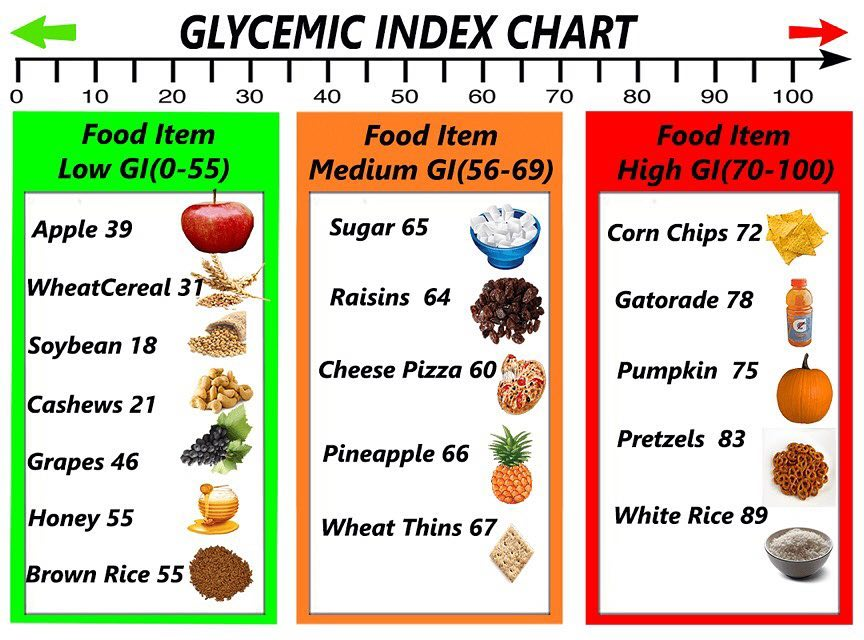Indian Economy
Employment Trends in India
For Prelims: Employment, National Sample Survey Office, Pradhan Mantri Mudra Yojana, Principal employment, Gig Economy, Start-Up India Scheme, SMILE, Informal sector
For Mains: Employment challenges in India, Unemployment in India, Government initiatives, Growth and Development
Why in News?
India has been witnessing a significant surge in employment in recent years, with the creation of over 80 million additional jobs between 2017-18 and 2022-23.
- This rapid growth has sparked a debate, with narratives emerging around the underlying causes and the sustainability of this trend.
What are the Key Trends in Employment Growth?
- Historical Growth: Analysis using National Sample Survey Office (NSSO) data from 1983 to 2023 shows consistent growth in principal employment across all sub-periods.
- Consistent Growth: Principal employment, which measures those working for the bulk of the year, has grown consistently since 1983.
- Principal employment refers to the main job worked for the majority of the year, while subsidiary employment is typically part-time, of shorter duration, and in addition to the main job.
- Every sub-period under consideration has seen growth in principal employment, with no instances of jobless growth.
- Significant Increase (2017-2023): The period from 2017-18 to 2022-23 saw the fastest increase, with about 80 million additional jobs, translating to an annual growth rate of 3.3%.
- Labour Market Indicators:
- Despite long-term deterioration since 2000, recent years have seen improvements in key labour market indicators such as labour force participation rate, workforce participation rate, and unemployment rate.
- These improvements coincided with economic distress periods, notably before and during the Covid-19 pandemic.
- Despite long-term deterioration since 2000, recent years have seen improvements in key labour market indicators such as labour force participation rate, workforce participation rate, and unemployment rate.
- Broad-Based Growth: Employment growth has been well-distributed across rural and urban sectors, and various industries (manufacturing, agriculture, construction, services).
- Women and Older People: The employment growth has been highest for women, at over 8% annually.
- Employment among those aged 60 and above has also grown at around 4.5% annually.
- There are various reasons for this trend, including increasing distress, improved access to resources like water and energy, and greater flexibility in care-related work.
- The employment of older people has been increasing since the 1980s, possibly due to longer lifespans.
- Employment Condition Index:
- The index is based on seven labour market outcome indicators, including the percentage of workers in regular formal work, casual labourers, self-employed workers below the poverty line, work participation rate, average monthly earnings of casual labourers, the unemployment rate of educated youth, and youth not in employment and education or training.
- The "employment condition index" has improved between 2004-05 and 2021-22.
- However, some states (Bihar, Odisha, Jharkhand, UP) have remained at the bottom throughout this period.
- Other states (Delhi, Himachal Pradesh, Telangana, Uttarakhand, Gujarat) have stayed at the top.
- The index is based on seven labour market outcome indicators, including the percentage of workers in regular formal work, casual labourers, self-employed workers below the poverty line, work participation rate, average monthly earnings of casual labourers, the unemployment rate of educated youth, and youth not in employment and education or training.
How has Employment Quality Evolved?
- Rise in Informal Employment:
- Around 50% of jobs in the formal sector are informal.
- Approximately 82% of the workforce is engaged in the informal sector.
- Nearly 90% are informally employed.
- Dominance of Self-Employment:
- A large part of the employment growth (44 million) is in the form of own-account workers and unpaid family workers.
- This could be a result of government schemes like Pradhan Mantri MUDRA Yojana (PMMY), which have provided significant funding to this segment
- Self-employment is the primary source of employment, constituting 55.8% in 2022.
- Casual employment (hiring employees on a work-as-needed basis) accounts for 22.7%, and regular employment for 21.5%.
- A large part of the employment growth (44 million) is in the form of own-account workers and unpaid family workers.
What is the Trend in Wages and Salaries?
- Aggregate wages and salaries have seen relative stagnation in recent years.
- From 2017-18 to 2022-23, the average annual growth of salaries and wages was 6.6% in nominal terms but only 1.2% after accounting for inflation.
- While there is no apparent wage distress, there is also no significant improvement in living conditions.
- Possible reasons include the dampening of wages due to a large influx of workers and stagnating labour productivity.
What are the Trends in Youth Employment?
- Youth employment and underemployment increased between 2000 and 2019 but declined during the pandemic years.
- However, unemployment among youths, especially those with secondary-level or higher education, has intensified over time.
- In 2022, the share of unemployed youths in the total unemployed population was 82.9%, and the share of educated youths among all unemployed people increased to 65.7% from 54.2% in 2000.
- The unemployment rate among educated youths was six times greater for those with secondary education or higher (18.4%) and nine times higher for graduates (29.1%) than for persons who could not read or write (3.4%) in 2022.
- This was higher among educated young women (21.4%) than men (17.5%), especially among female graduates (34.5%) compared to men (26.4%).
What are the Concerns Regarding Employment in India?
- Growth of Informal Sector: While the economy is growing, many new jobs are informal, lacking security, benefits, or minimum wage.
- Quality of Jobs for Youth: Though the unemployment rate might not be high, youth employment is often of poorer quality.
- This means young people might be over-educated for the available jobs or find themselves in precarious situations like the gig economy.
- Challenges for gig or platform workers include lack of job security, irregular wages, and uncertain employment status.
- Gender Gap: Women's participation in the workforce hasn't grown as expected. Many end up in unpaid family work or low-paying self-employment instead of formal jobs.
- Skill Mismatch: The education system might not be aligned with the current job market needs.
- Formalisation Challenges: A significant portion of the Indian workforce remains in the informal sector.
- This translates to lower tax revenue for the government and limited social security benefits for workers.
- Job Automation: As with many countries, automation poses a threat to certain sectors in India. This can lead to job displacement in industries like manufacturing.
- The rise of artificial intelligence (AI) may impact employment, particularly in the outsourcing industry in India, where some back-office tasks could be taken over by AI.
- Vulnerability to Economic Shocks: Many of the workforce relies on informal or casual employment. This makes them highly vulnerable to economic downturns or external shocks, as seen during the Covid-19 pandemic.
- High Demand for Government Jobs: There is a significant demand for government jobs due to the lack of job creation in the private sector.
- This situation underscores the appeal of stable employment provided by the government.
Government’s Initiatives Related to Employment
- Support for Marginalised Individuals for Livelihood and Enterprise (SMILE).
- PM-DAKSH (Pradhan Mantri Dakshta Aur Kushalta Sampann Hitgrahi).
- Mahatma Gandhi National Rural Employment Guarantee Act (MGNREGA).
- Pradhan Mantri Kaushal Vikas Yojana (PMKVY).
- Start-Up India Scheme.
- Rozgar Mela.
- Indira Gandhi Urban Employment Guarantee Scheme- Rajasthan.
- Direct Benefit Transfer Scheme.
- Pradhan Mantri Mudra Yojana.
Way Forward
- Promote Formalisation: Implement strategies to incentivise informal workers to transition to the formal sector, drawing on lessons from Peru's National Strategy.
- Peru's Policy Frameworks for Transition to Formality (FSPs) and National Action Plans on Business and Human Rights (NBA and NAP) involve stakeholders in a decentralised approach, including the state, businesses, academia, workers, civil society, and indigenous peoples.
- Streamline the registration process for small businesses in the informal sector. This encourages them to formalise, bringing them under the umbrella of labour laws and social security benefits.
- Targeted Programs for Marginalised Groups: Implement more targeted skill development programs for individuals from marginalised communities, similar to SMILE initiative.
- This ensures inclusivity and empowers these communities to participate actively in the workforce.
- AI and Automation Reskilling: Prepare the workforce for the rise of automation by providing training programs in areas like AI, robotics, and data science.
- This allows workers to adapt and contribute to the evolving job market.
- Social Security Portability: Design a portable social security system that caters to the needs of gig workers and those transitioning between formal and informal sectors.
- Entrepreneurship and Innovation: Establish industry-specific startup incubators and accelerators.
- Encourage the growth of angel investor networks that provide early-stage funding for promising startups.
- Remote Work Opportunities: Encourage companies to leverage technology and offer remote work arrangements. This expands job opportunities for individuals living outside major cities and promotes a better work-life balance.
|
Drishti Mains Question: Q. How does informal job growth affect stability and social security? Can promoting formalisation and AI reskilling ensure sustainable employment? |
UPSC Civil Services Examination Previous Year Question (PYQ)
Prelims
Q. Pradhan Mantri MUDRA Yojana is aimed at (2016)
(a) bringing the small entrepreneurs into formal financial system
(b) providing loans to poor farmers for cultivating particular crops
(c) providing pensions to old and destitute persons
(d) funding the voluntary organizations involved in the promotion of skill development and employment generation
Ans: (a)
Q. Disguised unemployment generally means (2013)
(a) large number of people remain unemployed
(b) alternative employment is not available
(c) marginal productivity of labour is zero
(d) productivity of workers is low
Ans: (c)
Mains
Q. Most of the unemployment in India is structural in nature. Examine the methodology adopted to compute unemployment in the country and suggest improvements. (2023)

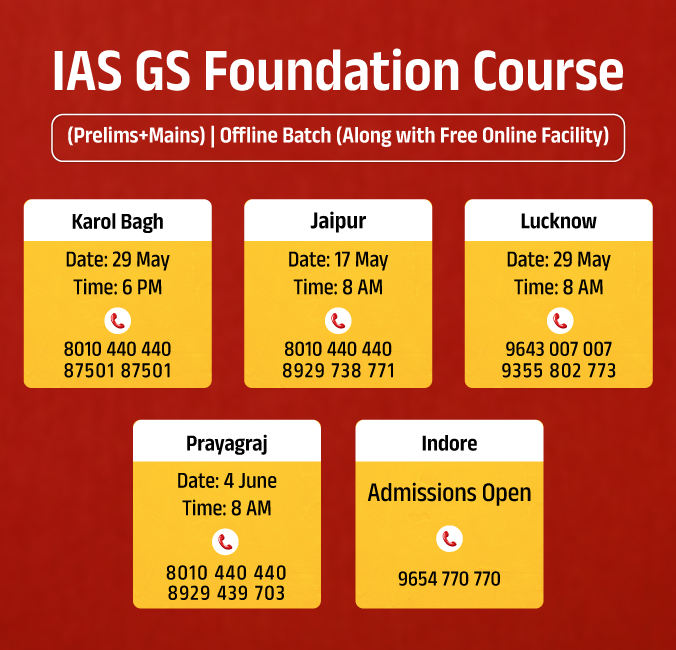
Indian Economy
India’s E-commerce Market
For Prelims: e-Commerce, Foreign Direct Investment, Consumer Protection, Data Privacy, Intellectual Property, The Information Technology Act, Information Technology (Intermediary Guidelines and Digital Media Ethics Code) Rules 2021, Consumer Protection (E-Commerce) Rules 2020, Foreign Direct Investment Policy
For Mains: Need of E-Commerce export policy, Comparison of Indian E-Commerce Export Policy with Other Countries
Why in News?
According to a recent report by Invest India, an Investment Promotion and Facilitation Agency, India's E-Commerce Sector is projected to reach USD 325 billion by 2030.
- This will position India as the 3rd largest online retail market globally by scale.
What is the Status of the E-Commerce Sector in India?
- About: E-commerce, short for Electronic Commerce, encompasses the buying and selling of goods and services over the internet.
- It eliminates geographical barriers, allowing transactions to occur seamlessly across borders.
- It includes a wide range of activities, from online retailing to digital payments, and continues to evolve with advancements in technology and changes in consumer behaviour.
- Types:
- Key Statistics:
- Between 2019 and 2026, number of online shoppers in India will reach:
- 88 million in Rural India, showing a Compound annual growth rate (CAGR) of 22% and
- 263 million in Urban India showing a CAGR of 15%.
- In the fiscal year 2022-23, Government e-marketplace (GeM) achieved its highest-ever Gross Merchandise Value of USD 2011 billion.
- As of 2023, the e-commerce sector in India is valued at USD 70 billion, constituting approximately 7% of the country’s total retail market.
- As of 2022, Top 3 countries in the e-commerce market are : China, USA and Japan.
- As of 2022, India ranked 7th in the e-commerce Market.
- Between 2019 and 2026, number of online shoppers in India will reach:
- Driving Factors:
- Smartphone and Digital Penetration: The rise in smartphone usage has been a significant catalyst for e-commerce growth in India. It has democratised access to online platforms.
- 1.18 billion people, representing over 80% of India's population, will have access to smartphones by 2026.
- The Unified Payments Interface (UPI) has emerged as a significant player in digital transactions, facilitating transactions worth USD 1.5 trillion in 2022.
- Affordability of Cheap Internet: It plays a pivotal role in India's internet penetration.
- Now one gigabyte of data is priced at approximately USD 0.17 (Rs 13.5), which gives incentive to a substantial number of the population to opt for online activities
- India ranks 7th on the list of countries with cheapest mobile data.
- Also, internet penetration is expected to grow to 87% by 2025.
- Improved Logistics and Supply Chain: The growth of e-commerce in India has been supported by the development of efficient logistics and supply chain networks.
- Government initiatives such as the National Logistics Policy streamlines deliveries to the last mile, enhancing logistical efficiency and cost-effectiveness.
- Rising Middle-Class Population and Disposable Incomes: India's growing middle-class population and increasing disposable incomes have fueled the demand for e-commerce.
- According to the World Economic Forum, nearly 80% of households in 2030 will be middle-income in India.
- Convenience and Time-Saving: E-commerce offers consumers the convenience of shopping from the comfort of their homes or on-the-go, saving time and effort.
- Example: Food delivery platforms like Zomato and Swiggy have gained immense popularity due to the convenience they offer to consumers, allowing them to order meals without leaving their homes or offices.
- Wider Product Assortment and Competitive Pricing: E-commerce platforms provide consumers with a vast array of product choices and competitive pricing options, making it easier to find desired products at affordable rates.
- This has been a significant draw for consumers, particularly in smaller cities and rural areas where product availability and pricing can be limited.
- Rising Focus on Rural E-Commerce: Recent reports highlight the growing prominence of Rural-Centric E-Commerce.
- It expects a significant portion of demand to originate from tier 2-4 towns and rural areas by 2026.
- This trend is further reinforced by government initiatives and the emergence of quick commerce.
- Smartphone and Digital Penetration: The rise in smartphone usage has been a significant catalyst for e-commerce growth in India. It has democratised access to online platforms.
- Challenges:
- Counterfeit and Intellectual Property Infringement: Cases of counterfeit and substandard goods being sold on popular e-commerce platforms have been reported in India.
- It can undermine consumer trust and lead to legal and financial consequences for e-commerce companies.
- Infrastructural Challenges: Internet penetration remains relatively low in certain areas. Postal addresses are not standardised, affecting logistics.
- Due to lack of supply chain integration, high delivery charges, more time taken to deliver product
- Lack of Clear Regulatory Framework: Clear legislation is needed to regulate e-commerce practices domestically and internationally.
- The rise of social commerce, where consumers can make purchases directly through social media platforms, poses a potential challenge to the traditional regulatory framework.
- Technological Disruptions and Cybersecurity Threats: The e-commerce industry is susceptible to technological disruptions, such as the emergence of new business models, advancements in artificial intelligence, and cybersecurity threats like data breaches, hacking, and phishing attacks.
- Customers are sceptical of paying by credit card due to the increasing threat of fraud by hackers
- Counterfeit and Intellectual Property Infringement: Cases of counterfeit and substandard goods being sold on popular e-commerce platforms have been reported in India.
What are the Government Initiatives Related to the E-Commerce Sector in India?
- FDI Policy: 100% FDI is allowed in B2B e-commerce. Also, 100% FDI under the automatic route is permitted in the marketplace model of e-commerce.
- National E-Commerce Policy: The Indian government is set to introduce a national e-commerce policy that aims to create a favourable environment for the development of the sector and drive exports.
- Key Features:
- Aim: Establish a regulatory framework that facilitates ease of doing business in the sector.
- Boosting Exports: Recognizes India’s significant e-commerce export potential. Aims to capitalise on global cross-border e-commerce growth.
- Regulatory Body and FDI: Considers establishing a regulator for the e-commerce sector. Advocates for transparency in rules governing FDI.
- Addressing Trader Concerns: Clarifies issues related to deep discounts and preferences given to select sellers.
- Key Features:
- Open Network for Digital Commerce (ONDC): This initiative fosters an open-source e-commerce network that connects consumers, platforms, and retailers, promoting transparency and interoperability.
- It will provide equal opportunities for Micro, Small, and Medium Enterprises (MSMEs) to thrive in digital commerce.
- The Consumer Protection (e-commerce) Rules, 2020. The Rules directed the e-commerce companies to display the country of origin alongside the product listings.
- In addition, the companies will also have to reveal parameters that go behind determining product listings on their platforms.
- Digital India initiative: The Digital India initiative has provided solid impetus to other government-led initiatives, including UMANG, Start Up India and Aatmanirbhar Bharat, which have great potential to translate into global success.
- India Stack: This initiative comprises a set of open APIs (Application Programming Interfaces) that enable government agencies, businesses, and developers to leverage digital infrastructure for various services, including e-commerce.
- BharatNet Project: Aims to provide internet connectivity in local bodies (Panchayats), increasing e-commerce reach in rural areas.
- Heavy investment is being made by the Government for rolling out a fibre network for 5G that will help boost e-commerce in India.
What Measures can be Adopted to Boost the E-Commerce Sector?
- Robust Infrastructure Development: Investing in improving logistical infrastructure, including transportation networks and warehousing facilities is needed to enhance last-mile delivery and reduce fulfilment costs.
- Utilising AI technology, data analytics and automation to optimise logistics and supply chain management.
- Strong Payment System: As E-commerce heavily relies on online payment, it is necessary to build a secure payment system to build trust and facilitate transactions.
- It is important to ensure that the payment gateway complies with the PCI DSS for security.
- The Payment Card Industry Data Security Standard (PCI DSS) is a set of security standards designed to protect credit card data.
- It is required by all organisations that process, store, or transmit credit card information.
- It is important to ensure that the payment gateway complies with the PCI DSS for security.
- Regulatory Framework for E-commerce: It is needed to ensure that consumer rights are safeguarded through a clear framework, which includes accurate product descriptions, transparent pricing, fair return and exchange policies, and effective grievance redressal mechanisms.
- Creating Awareness: It is crucial to create awareness among people to promote and increase the growth of this industry.
- It can be done through several ways such as:
- Education and training can help in gaining a better understanding of the benefits and opportunities offered by e-commerce exports.
- Networking events which can serve as a platform for businesses and individuals to connect and share ideas.
- Marketing campaigns can also play a crucial role in creating awareness about e-commerce exports.
- It can be done through several ways such as:
|
Drishti Mains Question: The Open Network for Digital Commerce (ONDC) initiative is expected to make e-commerce more inclusive and accessible for consumers. Discuss. |


Economy
Global Trade Update: UNCTAD
For Prelims: United Nations Conference on Trade and Development (UNCTAD), Electric Car, GDP (Gross Domestic Product), Production-Linked Incentive (PLI).
For Mains: UNCTAD, Indian Economy and issues relating to planning, mobilisation of resources, growth, development and employment.
Why in News?
Recently, the United Nations Conference on Trade and Development (UNCTAD) has released its Global Trade Update 2024, which highlights that, after facing declines over several quarters, international trade is poised for a rebound in 2024.
- Recently, UNCTAD has officially rebranded as "UN Trade and Development" as part of its 60th-anniversary celebrations.
- The organisation will adopt its new name and logo across all official channels, including communication materials in the six official languages of the United Nations.
What are the Key Highlights of the Global Trade Update?
- 2023 as a Challenging Year for Trade:
- Global trade dipped 3% to USD 31 trillion in 2023 after peaking in 2022. The downturn was driven by less demand in developed economies and weaker trade in East Asia and Latin America.
- The downturn was driven by a 5% fall in trade in goods. Meanwhile, trade in services bucked the negative trend, growing by 8%.
- The sector was fuelled by a nearly 40% surge in tourism and travel-related services.
- Developing Countries Facing More Issues:
- Developing countries experienced a sharper decline in trade, with their imports and exports falling by 5% and 7%, respectively, compared to a 4% drop in imports and 3% in exports for developed nations.
- Most regions saw negative trade growth in 2023. The exception was a significant increase in intra-regional trade in Africa.
- Electric Cars Drove Trade in Environmental Goods:
- Despite the overall decline, 2023 saw a 2% rise in trade for environmental products, driven primarily by soaring Electric Car sales. E.g. Trade in electric vehicles grew by 60%.
- End 2023 shows Signs of Stabilisation:
- The final quarter of 2023 brought signs of stabilisation, particularly in developing regions.
- Most sectors saw a rebound, although trade in apparel (clothing and clothing accessories) continued to contract, falling by 13%.
- Looking ahead to 2024:
- The forecast for 2024 is broadly positive, with GDP (Gross Domestic Product) growth expected to continue at around 3%.
- However, the logistical challenges such as shipping disruptions in the Red Sea, Black Sea and Panama Canal cast shadows over the optimistic outlook, threatening to raise costs and disrupt supply chains.
- Ongoing geopolitical tensions and regional conflicts could also renew volatility in energy and agricultural markets.
- Additionally, the growing need to secure access to minerals critical for the energy transition could affect prices and add to market volatility for these commodities.
- Political Proximity of Trade:
- During the last two years, the geographical proximity of international trade has remained relatively constant, showing minimal nearshoring or far-shoring trends.
- However, since the latter part of 2022, there has been a noticeable rise in the political proximity of trade.
- This indicates that bilateral trade patterns have been favouring trade between countries with similar geopolitical stances. Concurrently, there has been an increasing concentration of global trade to favour major trade relationships, although this trend has softened in the last quarter of 2023.
UNCTAD
- United Nations Conference on Trade and Development (UNCTAD) is a permanent intergovernmental body of the United Nations.
- It was established in 1964 and is headquartered in Geneva, Switzerland.
- It aims to promote sustainable development, particularly in developing countries, through international trade, investment, finance, and technology transfer.
- UNCTAD's work focuses on four main areas:
- Trade and development,
- Investment and enterprise
- Technology and innovation
- Macroeconomics and development policies.
What are the Key Highlights of the Report Related to India?
- Key Observations:.
- Despite India's efforts to reduce dependency on China through the implementation of its flagship Production-Linked Incentive (PLI) scheme and Quality Control Orders (QCOs), there was still an increase in imports from China.
- UNCTAD's estimates revealed a significant trade reorientation caused by the Russia-Ukraine conflict.
- Russia's trade dependency on China increased by 7.1% and decreased by 5.3% with the EU, primarily due to a shift in Russian oil exports from the EU to China and India.
- Government of India’s Stand:
- The Ministry of Commerce and Industry stated that although the growing trade dependence of India may seem negative, detailed analysis revealed favourable trade dynamics.
- India's imports from the EU rose by 9.7% in 2023, with a significant share consisting of capital goods (35% in 2022) and intermediate goods and raw materials (50% in 2022) used as inputs.
- India’s export of smartphones have risen 98.42% in 2023 at USD 14.27 billion from USD 7.19 billion in 2022.
- Therefore, in 2023, India's trade performance significantly improved with the EU and China.
UPSC Civil Services Examination, Previous Year Question
Prelims:
Q. Consider the following statements: (2023)
Statement-I: In the post-pandemic recent past, many Central Banks worldwide had carried out interest rate hikes.
Statement-II: Central Banks generally assume that they have the ability to counteract the rising consumer prices via monetary policy means.
Which one of the following is correct in respect of the above statements?
(a) Both Statement-I and Statement-II are correct and Statement-II is the correct explanation for Statement-1
(b) Both Statement-I and Statement-II are correct and Statement-II is not the correct explanation for Statement-1
(c) Statement-I is correct but Statement-II is incorrect
(d) Statement-I is incorrect but Statement-II is correct
Ans: A


Governance
Smart Cities Mission
For Prelims: Smart Cities Mission, Centrally Sponsored Scheme, Sustainable development, Special Purpose Vehicle (SPV), Public-Private Partnership (PPP), Atal Mission for Urban, Rejuvenation and Urban Transformation (AMRUT), Pradhan Mantri Awas Yojana-Urban (PMAY-U), Climate Smart Cities Assessment Framework 2.0, TULIP-The Urban Learning Internship Program
For Mains: Analysis of Smart Cities Mission
Why in News?
Despite two extensions until June 2024, the Smart Cities Mission (SCM) launched in 2015, is unlikely to meet its deadline, with 5,533 completed projects funded at Rs. 65,063 crore and 921 ongoing projects worth Rs. 21,000 crore.
What is the Smart Cities Mission (SCM)?
- About:
- It is a Centrally Sponsored Scheme, launched in June 2015 to transform 100 cities to provide the necessary core infrastructure and clean and sustainable environment to enable a decent quality of life to their citizens through the application of "Smart Solutions".
- It aimed to improve the quality of life for citizens through sustainable and inclusive development.
- Objectives:
- Provide core infrastructure and decent quality of life
- Clean and sustainable environment
- Application of ‘Smart’ Solutions
- Sustainable and inclusive development
- Compact areas
- Replicable model
- Components of the SCM:
- Area-based Development:
- Redevelopment: Renewal of existing urban areas to improve infrastructure and amenities. E.g. Bhendi Bazar, Mumbai.
- Retrofitting: Upgrading infrastructure in existing areas to make them more efficient and sustainable. E.g. Local Area Development (Ahmedabad).
- Greenfield Projects: Development of new urban areas with a focus on sustainability and smart technologies. E.g. New Town, Kolkotta, Naya Raipur, GIFT City.
- Pan-City Solutions:
- Implementation of Information and Communication Technology (ICT) solutions across various sectors such as e-governance, waste management, water management, energy management, urban mobility, and skill development.
- Area-based Development:
- Governance Structure:
- To enhance effectiveness, a new governance model was adopted.
- A Special Purpose Vehicle (SPV) was created under the Companies Act, 2013 led by a bureaucrat or a representative of a multinational corporation (MNC),
- To enhance effectiveness, a new governance model was adopted.
- Current Status of the Smart Cities Mission (SCM): Initially planned for completion by 2020, the mission was extended twice, with the current deadline set for June 2024.
- The funding Pattern was envisioned through Public-Private Partnership (PPP) Route.
- Government Initiatives
- Atal Mission for Urban Rejuvenation and Urban Transformation (AMRUT)
- Pradhan Mantri Awas Yojana-Urban (PMAY-U)
- Climate Smart Cities Assessment Framework 2.0.
- TULIP-The Urban Learning Internship Program.
- Smart Cities Mission (SCM): Launched in June 2015, aimed to adapt to global changes by selecting 100 cities for smart city development over five years.
What is a Smart City?
- The term ‘Smart City’ gained prominence after the 2009 financial crash, referring to cities designed with advanced ICT integration, often likened to new Silicon Valleys.
- However in the Indian context, a Smart City would be the one which plans judiciously to meet its aspirations and challenges in a sustainable manner while fostering principles of good governance.
- A Smart City is one which has basic infrastructure, uses ‘smart’ solutions to make infrastructure and services better, and relies on Area-based development.
- Evolution of Smart Cities: Before 2009, cities were mainly seen as hubs of commerce and culture with little emphasis on integrating ICT however after 2009, there was a marked shift toward leveraging ICT for enhanced efficiency, sustainability, and economic growth, partly driven by post-financial crash recovery needs.
What are the Challenges Faced by the Smart City Mission?
- Lack of Clarity in Definition:
- The SCM did not clearly define a smart city, acknowledging the varied conceptualisations based on local contexts and aspirations.
- The definition's ambiguity makes it challenging to allocate resources effectively and prioritise projects.
- The SCM did not clearly define a smart city, acknowledging the varied conceptualisations based on local contexts and aspirations.
- Top Down Approach:
- The role of elected representatives being sidelined by reducing the role of elected councils in decision-making raises concerns about democratic governance and accountability.
- Flawed City Selection Process:
- Selecting cities on a competitive basis overlooked the diverse urban realities of India, which are dynamic and not static like the West.
- The scheme focused on developing less than 1% of a city's area, leading to exclusion of many areas from development.
- For example, Chandigarh had invested Rs 196 crore into one pocket-sector 43.
- Inadequate Funding and Scope:
- McKinsey reports indicate that to improve livability in Indian cities by 2030, USD 1.2 trillion is needed, making Rs. 1,67,875 crore over nine years a mere 0.027% of the total urban India expenditure.
- Initially planned for completion by 2020, the mission was extended twice, with the current deadline set for June 2024, indicating the complexity of the urban development process.
- Governance Structure Issues:
- The Special Purpose Vehicle (SPV) model created for smart cities was not aligned with the 74th Constitutional Amendment Act, leading to objections from cities regarding the governance structure as it bypassed traditional city governance structures.
- Despite PPP being an important driver of the mission, not more than 5% of the funding has come through this route.
- The Special Purpose Vehicle (SPV) model created for smart cities was not aligned with the 74th Constitutional Amendment Act, leading to objections from cities regarding the governance structure as it bypassed traditional city governance structures.
- Displacement and Social Impact:
- Smart city projects led to the displacement of people living in poorer localities, such as street vendors, disrupting urban communities.
- The focus on infrastructure development in some towns led to enhanced urban flooding, as water channels and contours were disrupted or dismantled.
What are the Steps Needed to Strengthen the Smart City Mission?
The Standing Committee on Housing and Urban Affairs gives the following overarching recommendations.
- Governance and Implementation:
- Dedicated CEO should be appointed with fixed tenure, ensuring the representation of experts and stakeholders, and utilising existing expertise.
- Members of Parliament (MPs) need to be included in State-Level Advisory Forums, and should be consulted for project identification, selection, and implementation, as they have grassroots-level expertise.
- Project Focus and Priorities:
- The emphasising should be more on pan-city projects for comprehensive and holistic development, optimising resource allocation and reducing wastage.
- Digital infrastructure protection mechanisms are needed to safeguard against cyber threats and maintain data privacy.
- Capacity Building and Funding:
- A plan to strengthen Urban Local Bodies (ULBs) capabilities in small cities and central government assistance for organisational restructuring and capacity building in states requiring support should be taken up.
- Project Completion:
- The focus should be on timely completion of project. The ministry's role should not be confined to fund transfer but extend to ensuring execution and completion by intervening with inputs and expertise.
|
Drishti Mains Question: Q. Discuss the challenges faced by the Smart Cities Mission in India. Suggest measures to address these challenges and ensure the mission's effectiveness in promoting sustainable urban development. |
UPSC Civil Services Examination, Previous Year Question (PYQ)
Mains:
Q. With a brief background of quality of urban life in India, introduce the objectives and strategy of the ‘Smart City Programme.’ (2016)

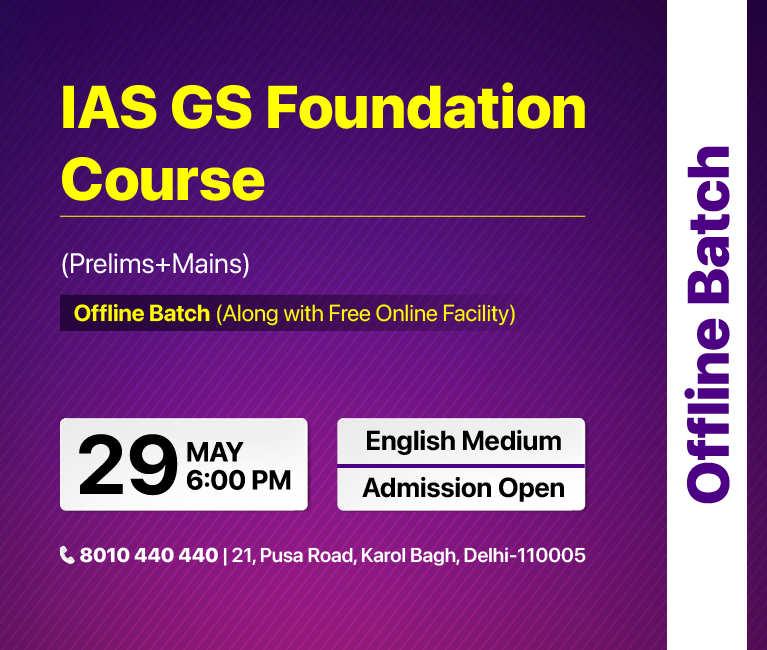
Indian Economy
India’s Target of USD 1 Trillion Goods Exports by 2030
For Prelims: Carbon Border Adjustment Mechanism (CBAM), Emission Trading System (ETS), Green Energy, World Trade Organization, Foreign Trade Policy, European Union (EU)
For Mains: Challenges posed by Indian Exports due to the recent trade restricting policies by the European Union (EU)
Why in News?
Recently, the commerce Ministry has initiated an exercise to identify required infrastructure needs, potential sectors, and clusters which would help the country achieve the USD 1 trillion merchandise exports target by 2030.
- However, a major future challenge lies in ensuring sustainable practices throughout the supply chain. This comes in the backdrop of another environmental law passed recently by the European Union (EU) - Corporate Sustainability Due Diligence Directive (CSDDD).
What is the Current Status of India's Exports?
- The Foreign Trade Policy (FTP) 2023 aims to boost India's exports to USD 2 trillion by 2030. It focuses on emerging areas of export, such as high-tech manufacturing, pharmaceuticals, and e-commerce.
- India’s merchandise exports increased from USD 314 billion in 2013-14 to USD 451 billion in 2022-23, growing at an average annual rate of 5%.
- In terms of export destinations for Indian goods and services, the United States and the United Arab Emirates (UAE) have remained key markets, with India diversifying in terms of export destinations to Bangladesh, Indonesia and the Netherlands.
- However, India’s trade deficit has more than doubled in the last decade, reaching over USD 50 billion in 2022-23.
What are the Emerging Sustainability Related Hurdles for Indian Exports?
- Stricter Environmental Regulations in Importing Countries:
- Indian exporters, like those in sectors like textiles industry (water-intensive cotton and jute farming) and others, might struggle to comply with these evolving regulations if they don’t adopt sustainable practices.
- Example: The European Union (EU) recently passed the Corporate Sustainability Due Diligence Directive (CSDDD).
- This law requires companies operating in the EU to ensure their entire supply chain (from raw material sourcing to production) adheres to environmental regulations and follows sustainable practices.
- Indian exporters, like those in sectors like textiles industry (water-intensive cotton and jute farming) and others, might struggle to comply with these evolving regulations if they don’t adopt sustainable practices.
- Growing Consumer Demand for Sustainable Products:
- Indian exporters in sectors like apparel, footwear, or home goods can lose market share if their products aren't perceived as sustainable. Consumers might choose alternatives from competitors with a stronger sustainability focus.
- Example: Globally, consumers are increasingly choosing eco-friendly products. Fashion brands are facing pressure to use recycled materials like organic cotton or polyester.
- Indian exporters in sectors like apparel, footwear, or home goods can lose market share if their products aren't perceived as sustainable. Consumers might choose alternatives from competitors with a stronger sustainability focus.
- Supply Chain Transparency Requirements:
- Indian exporters who cannot demonstrate a transparent and sustainable supply chain may face difficulties accessing some export markets.
- Example: Many countries are demanding greater transparency in supply chains. This means ensuring ethical labour practices (fair wages, safe working conditions) and environmentally responsible sourcing throughout the production process.
- Indian exporters who cannot demonstrate a transparent and sustainable supply chain may face difficulties accessing some export markets.
- Carbon Pricing Mechanisms:
- Indian exporters, particularly those in heavy industries like steel or cement production, may face increased costs due to their high carbon footprint. This could make their products less competitive in the global market compared to those with lower emissions.
- Example: Groups like the European Union (EU) are implementing carbon pricing mechanisms like Carbon Border Adjustment Mechanism (CBAM to reduce carbon emissions.
- Indian exporters, particularly those in heavy industries like steel or cement production, may face increased costs due to their high carbon footprint. This could make their products less competitive in the global market compared to those with lower emissions.
- Lack of Infrastructure and Awareness:
- India might face challenges due to a lack of infrastructure for sustainable practices like efficient waste management or readily available renewable energy sources.
- Additionally, there may be a need to raise awareness among businesses about the importance of sustainability and best practices to achieve it.
How does EU's Environmental Regulations Impact India's Export Targets?
- Sustainability Issues for India’s Export:
- India's major exports to the EU, such as iron ore and steel, are facing a significant threat due to the carbon levies ranging from 19.8% to 52.7%.
- The proportion of coal-fired power in India is close to 75%, which is much higher than the EU (15%) and the global average (36%).
- Increased Costs and Compliance Burden:
- Over 1/4th of India's exports of iron, steel, and aluminium are destined for the European Union. However, industry fears that potential EU tariffs could increase the cost of these exports by 20 to 35%.
- Additionally, Indian companies will need to implement stricter due diligence practices throughout their supply chains. This could involve audits, monitoring, and risk assessments to ensure no forced labour or environmental damage occurs. These measures will likely add to operational costs.
- Market Access Challenges:
- Companies that fail to comply with CSDDD standards may face difficulties exporting to the EU. The directive allows for civil liability claims and potential exclusion from the EU market for non-compliance.
- Risk to Export Competitiveness:
- CBAM, initially, is likely to affect a few sectors but may expand to other sectors in the future, such as refined petroleum products, organic chemicals, pharma medicaments, and textiles, which are among the top 20 goods imported from India by the EU.
- Since India has no domestic carbon pricing scheme in place, this poses a greater risk to export competitiveness, as other countries with a carbon pricing system in place might have to pay less carbon tax or get exemptions.
What Steps Can Be Taken By India To Counter the Sustainability Related Hurdles?
- Global Supply Chain (GVC) Integration:
- India needs to increase its presence in the vast network of global supply chains, which account for 70% of global trade, is a significant growth opportunity.
- Cross-country estimates suggest that a 1% increase in GVC participation can boost per-capita income by more than 1%, particularly when countries engage in limited and advanced manufacturing.
- Infrastructure Boost:
- India should focus on upgradation of ports, airports, and railways is crucial to handle the projected surge in exports and imports.
- The Indian government has partnered with the Asian Development Bank (ADB) for collaboration that will identify promising sectors for export growth and pinpoint the necessary infrastructure upgrades to handle the projected $2.5 trillion increase in total trade volume by 2030 - A step in the right direction.
- Voicing Collective Challenges :
- India should raise developing countries' collective challenges related to the CBAM and CSDDD in international forums like the World Trade Organisation (WTO), asserting that it undermines the crucial principle of 'Common but differentiated responsibility.'
- By imposing restrictions on the developing world's ability to industrialise, CBAM challenges the equity envisioned in international climate agreements.
- India should raise developing countries' collective challenges related to the CBAM and CSDDD in international forums like the World Trade Organisation (WTO), asserting that it undermines the crucial principle of 'Common but differentiated responsibility.'
- Consideration of Export Tax:
- As a strategic response, India is contemplating imposing a similar tax on its exports to the EU. While this could subject producers to a comparable tax burden, the funds generated offer a unique opportunity to reinvest in environmentally friendly production processes.
- This not only mitigates the impact of current taxes but also positions India favourably for potential future reductions.
- The success of this countermeasure hinges on navigating these uncertainties and securing international cooperation.
- As a strategic response, India is contemplating imposing a similar tax on its exports to the EU. While this could subject producers to a comparable tax burden, the funds generated offer a unique opportunity to reinvest in environmentally friendly production processes.
What are the Major Government Initiatives to Promote Export Growth?
|
Drishti Mains Question: Q. Discuss about the recent trade restricting policies by the European Union (EU) and their impact on Indian exporters. |
UPSC Civil Services Examination, Previous Year Question(PYQ)
Prelims:
Q1. Which of the following adopted a law on data protection and privacy for its citizens known as the ‘General Data Protection Regulation’ in April 2016 and started implementation of it from 25th May 2018? (2019)
(a) Australia
(b) Canada
(c) The European Union
(d) The United States of America
Ans: (c)
Q2. ‘Broad-based Trade and Investment Agreement (BTIA)’ is sometimes seen in the news in the context of negotiations held between India and (2017)
(a) European Union
(b) Gulf Cooperation Council
(c) Organization for Economic Cooperation and Development
(d) Shanghai Cooperation Organization
Ans: (a)
Mains
Q. “Access to affordable, reliable, sustainable and modern energy is the sine qua non to achieve Sustainable Development Goals (SDGs)”.Comment on the progress made in India in this regard. (2018)


Important Facts For Prelims
GPT-4o
Why in News?
Recently, OpenAI introduced its latest large language model (LLM) called GPT-4o, billing it as their fastest and most powerful AI model so far.
What are the Key Highlights About GPT-4o?
- About: GPT-4o ("o" stands for "Omni" here) is a revolutionary AI model developed by OpenAI to enhance human-computer interactions.
- It allows users to input any combination of text, audio, and image and receive responses in the same formats, making it a multimodal AI model.
- Technology Applied: LLMs are the backbone of GPT-4o. Large amounts of data are fed into these models to make them capable of learning things themselves.
- GPT-4o differs from its predecessors by using a single model to handle text, vision, and audio tasks, eliminating the need for multiple models.
- For example, previous models required separate models for transcription, intelligence, and text-to-speech in voice mode, but GPT-4o integrates all of these capabilities into a single model.
- It can process and understand inputs more holistically, including tone, background noises, and emotional context in audio inputs.
- GPT-4o excels in areas like speed and efficiency, responding to queries as fast as a human does in conversation, in around 232 to 320 milliseconds.
- GPT-4o differs from its predecessors by using a single model to handle text, vision, and audio tasks, eliminating the need for multiple models.
- Key Features and Abilities:
- Enhanced audio and vision understanding allow GPT-4o to process tone, background noises, and emotional context, and identify objects.
- GPT-4o demonstrates significant advancements in handling non-English text, catering to a global audience.
- Safety Concerns:
- Despite its advancements, GPT-4o is still in the early stages of exploring unified multimodal interaction, with ongoing development required.
- OpenAI emphasises built-in safety measures and continuous efforts to address risks like cybersecurity, misinformation, and bias.
Large Language Model (LLM)
- A LLM is an AI program capable of recognising and generating text. LLMs are trained on vast datasets using machine learning and deep learning, particularly transformer models that mimic the human brain's neural structure.
- LLMs typically rely on transformer models, consisting of an encoder and a decoder. LLMs can be categorised based on architecture, training data, size, and availability.
- LLMs are used for generative AI tasks like producing text, assisting programmers with coding, and various applications like sentiment analysis and chatbots.
- They excel at understanding natural language and processing complex data, but can also provide unreliable information or "hallucinate" responses if given poor input data, and pose security risks if misused.
UPSC Civil Services Examination, Previous Year Questions (PYQs)
Prelims
Q. With the present state of development, Artificial Intelligence can effectively do which of the following? (2020)
- Bring down electricity consumption in industrial units
- Create meaningful short stories and songs
- Disease diagnosis
- Text-to-Speech Conversion
- Wireless transmission of electrical energy
Select the correct answer using the code given below:
(a) 1, 2, 3 and 5 only
(b) 1, 3 and 4 only
(c) 2, 4 and 5 only
(d) 1, 2, 3, 4 and 5
Ans: (b)


Important Facts For Prelims
Factors Shaping Global Gold Prices
Why in News?
A recent econometric study has found that there is a direct relationship between crude oil prices and gold prices, and an inverse relationship between the value of the U.S. dollar and gold prices.
What are the Major Findings of the Study?
- Findings: There is a positive correlation between global Crude Oil price and the international price of gold and a negative correlation between the external value of the U.S. Dollar and the International price of Gold .
- In other words, when crude oil prices shoot up, prices of gold increase, and when value of the US Dollar increases, the price of gold decreases.
- Reasons: Rise in international crude oil prices lead to global Inflation, which leads to an increase in the demand for gold as a Hedge against Inflation, as gold is a real asset and not subject to loss of value.
- Assuming other conditions are the same, when the U.S. dollar is strong, gold prices tend to remain low and steady.
- However, if the dollar weakens, demand for gold rises, leading to an increase in its price.
- This shift occurs because a strong dollar boosts confidence in its value, reducing the need for gold investment, while a weaker dollar prompts concerns about value loss, driving people towards gold as a safer asset.
- Assuming other conditions are the same, when the U.S. dollar is strong, gold prices tend to remain low and steady.
What are the Factors that Affect Gold Prices Worldwide?
- Gold Production: On the supply side, the gold prices depend on its production and mining cost.
- Since most of the available gold has already been mined, new production will involve digging deeper into the earth, which is expensive.
- So when the prices of crude oil and natural gas rise, it contributes to the rise in the price of gold.
- Top 5 gold producing countries are: China, Australia, Russia, Canada and the US.
- Since most of the available gold has already been mined, new production will involve digging deeper into the earth, which is expensive.
- Demand by Central Banks: Institutional demand, particularly from central banks, drives gold prices to record levels.
- They purchase gold to strengthen reserve assets, given its value retention.
- With rising crude oil prices and geopolitical tensions, central banks globally are increasing their gold reserves to mitigate risks associated with foreign currency reserves.
- As of March 2024, the Reserve Bank of India held a total of 822 metric tonnes of gold, with 408 metric tonnes held within the country.
- Investor Demand: Whenever stock markets, real estate and bonds fall across the world, investors turn to gold to park their funds.
- It is considered as a safe haven for investors during periods of uncertainties because gold is highly liquid and carries no default risk.
- Also individual and institutional investors like to invest in physical gold or their financial derivatives and exchange traded funds (ETFs) as a component of their investment portfolio with the aim of diversification of risk and safety of investment.
- Financial Derivatives are a financial instrument which derives its value/price from the underlying assets.
- Consumer Demand: It arises from individuals as well as jewellers.
- In both China and India, the largest consumers and importers of gold, it is bought as a traditional store of wealth and as ornaments for special occasions.
- However, consumer demand is mostly seasonal.
- Industrial Demand: Industrial demand is influenced by technology. Gold as a metal is preferred by industry for its intrinsic properties like malleability and conductivity.
- It is used in various industries such as:
- In the electronics industry for its excellent conductivity and corrosion resistance. It's commonly found in connectors, circuit boards, and various electronic components.
- In dentistry for making crowns, bridges, and other dental prosthetics due to their biocompatibility and durability.
- In aerospace applications, such as coating spacecraft components and satellites, due to its reflective properties and resistance to corrosion in harsh environments.
- In medical devices, such as implants and diagnostic equipment, due to its biocompatibility and inertness within the human body.
- It is used in various industries such as:
What is the Status of the Gold Industry in India?
- Gold Reserves in India: As per National Mineral Inventory, total reserves/resources of gold ore in India estimated at 501.83 million tonnes as of 2015.
- Largest resources of gold ore located in Bihar (44%), followed by Rajasthan (25%), Karnataka (21%), West Bengal (3%), Andhra Pradesh (3%), Jharkhand (2%)
- Karnataka commands around 80% of the nation's total gold output. The Kolar Gold Fields (KGF) in the Kolar district is one of the world's oldеst and deepest gold minеs.
- India Gold Import: India is the world's second-largest gold consumer. India's gold imports increased by 30% in 2023-24, reaching USD 45.54 billion.
- However, there was a significant decline of 53.56% in gold imports observed in March 2024.
- Sovereign Gold Bond Scheme: It was introduced by the Government in November 2015 as part of the Gold Monetisation Scheme.
- The objective was to decrease the demand for physical gold and encourage a portion of domestic savings, typically used for buying gold, to be invested in financial savings instead.
What is the Gold Standard?
- The Gold Standard (GS) is a voluntary carbon offset program focused on progressing the United Nations Sustainable Development Goals (SDGs) and ensuring that project’s benefit their neighbouring communities.
- It was developed under the leadership of the World Wildlife Fund (WWF), HELIO International, and SouthSouthNorth, with a focus on offset projects that provide lasting social, economic, and environmental benefits.
Read More: Increase in Gold Prices
UPSC Civil Services Examination, Previous Year Questions (PYQs)
Prelims:
Q. What is/are the purpose/purposes of Government’s ‘Sovereign Gold Bond Scheme’ and ‘Gold Monetization Scheme’? (2016)
- To bring the idle gold lying with Indian households into the economy.
- To promote FDI in the gold and jewellery sector.
- To reduce India’s dependence on gold imports.
Select the correct answer using the code given below:
(a) 1 only
(b) 2 and 3 only
(c) 1 and 3 only
(d) 1, 2 and 3
Ans:(c)
Q. Which one of the following groups of items is included in India’s foreign-exchange reserves? (2013)
(a) Foreign-currency assets, Special Drawing Rights (SDRs) and loans from foreign countries
(b) Foreign-currency assets, gold holdings of the RBI and SDRs
(c) Foreign-currency assets, loans from the World Bank and SDRs
(d) Foreign-currency assets, gold holdings of the RBI and loans from the World Bank
Ans: (b)
Q. Indian Government Bond Yields are influenced by which of the following? (2021)
- Actions of the United States Federal Reserve
- Actions of the Reserve Bank of India
- Inflation and short-term interest rates
Select the correct answer using the code given below.
(a) 1 and 2 only
(b) 2 only
(c) 3 only
(d) 1, 2 and 3
Ans: (d)


Rapid Fire
World Hydrogen Summit 2024
The Indian Pavilion, organised by the Ministry of New and Renewable Energy, stands as one of the largest at the esteemed World Hydrogen Summit 2024 in Rotterdam, Netherlands. It serves as a platform to showcase the nation's notable advancements in green hydrogen.
- India’s Green Hydrogen Initiatives: India launched the National Green Hydrogen Mission (NGHM) in January 2023 with a budget of Rs. 19,744 crores.
- The mission aims to achieve a green hydrogen production capacity of 5 MMT (Million Metric Tonnes) by 2030. Currently, tenders have been awarded for setting up 412,000 tonnes of Green Hydrogen production capacity and 1,500 MW of electrolyzer manufacturing capacity.
- Under NGHM a dedicated portal was launched to provide information on the mission and steps for developing the green hydrogen ecosystem in India.
- India has also released scheme guidelines for the use of Green Hydrogen in steel, transport, and shipping sectors.
- The Department of Science and Technology has initiated Hydrogen Valley Innovation Clusters to foster innovation and promote the green hydrogen ecosystem in India.
Read more: Green Hydrogen - Substitute to Fossil Fuel


Rapid Fire
Glycemic Index and Glycemic Load
Recent evidence strongly supports the significance of Glycemic Index (GI) and Glycemic Load (GL) in diets, particularly in relation to the increased risk of type 2 diabetes.
- Glycemic index (GI) is a measure of the ‘Quality’ of Carbohydrates in food.
- It refers to the property of the food to increase the Blood Glucose Level.
- For comparison, the GI of glucose is taken as 100 and the GI of other foods are given as a percentage of this.
- Glycemic Load (GL) is obtained by multiplying GI by the amount of the carbohydrate consumed.
- The GL is a measurement tool that takes into account portion sizes.
- This Study is relevant for India and South Asia because here carbohydrate consumption is high in the form of high GI White Rice or Wheat, leading to Very High GL of our diets.
Read More: Erythritol


Rapid Fire
NOTTO-ID
Recently, the centre has expressed its concern over the violations of Laws related to Organ Transplantation in India.
- Centre has urged States to direct the appropriate authority under the Transplantation of Human Organs & Tissues Act (THOTA), 1994, to investigate transplants in respect of foreign nationals in the State.
- It has also directed the states to ensure that a NOTTO (National Organ and Tissue Transplantation Organisation) ID is generated for the donor and recipient for both living-donor as well as deceased-donor transplants.
- NOTTO-ID is mandatory for considering allocation of organs in case of deceased-donor transplant.
- Centre has directed that this ID in case of a living-donor transplant shall also be generated at the earliest, maximum within 48 hours after the transplant surgery is done.
- As per the Indian law, Commercial Trading of the Organ is Not Allowed.
- Organ can be donated by a living person only if they (donor and recipient) are close relatives or share a close bond and want to donate altruistically.
Read More: Reforming Organ Transplantation


Rapid Fire
Compulsory Convertible Debentures
The Competition Commission of India (CCI) has approved subscription to Compulsory Convertible Debentures (CCDs) of Napino Auto and Electronics Limited by International Finance Corporation (IFC).
- A Compulsory Convertible Debenture is a Bond that must be converted into Equity at its maturity date or when certain events occur. It is a mix of debt and equity features
- Here conversion is mandatory, unlike in the case of optional convertible debentures where the investor has the choice to convert.
- CCDs are often used by startups and growth-stage companies that are not yet ready to give up equity but need capital for growth.
- IFC is an international organisation, established in 1956 to further economic growth in its developing member countries by promoting private sector development.
- It is a member of the World Bank Group.
- CCI is a statutory body of the Government of India responsible for enforcing the Competition Act, 2002, it was duly constituted in March 2009.
Read More: Competition Commission of India (CCI)


Rapid Fire
World Migration Report 2024
The World Migration Report 2024 was launched by the International Organization for Migration (IOM), revealing significant shifts in global migration patterns. World Migration Report is IOM’s flagship report released biennially.
- The report highlighted that Mexico, China, the Philippines, and France were the other four nations in the top five remittance recipient countries, with India being the top country receiving remittances in 2010, 2015, 2020, and 2022.
- International remittances increased by 650% from USD 128 billion to USD 831 billion between 2000 and 2022 with India receiving the highest remittances at USD 111 billion in 2022 followed by Mexico.
- USD 647 billion of the total remittances were sent by migrants to low- and middle-income countries.
- Despite remittances acting as a crucial source of income for many South Asians, migrant workers from the region remain vulnerable to various challenges.
- These challenges include financial exploitation, excessive debt incurred due to migration costs, xenophobia (hostility towards foreigners), and workplace abuses.
- The number of displaced people hit a record high by the end of 2022 at 117 million.
- India is the origin of the largest number of international migrants in the world (nearly 18 million), with large diasporas in countries like the UAE, the US, and Saudi Arabia.
- According to the report, India has a slightly higher share of female immigrants than males. Countries with a significantly high proportion of male emigrants include India, Bangladesh and Pakistan.
- Gulf Cooperation Council (GCC) countries remain significant destinations for migrant workers, especially from India, Egypt, Bangladesh, Ethiopia, and Kenya, employed in sectors like construction, hospitality, security, domestic work, and retail.
Read more: Remittance Inflow , International Migration Outlook 2023



